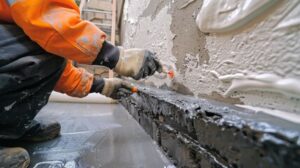Movers Meridian Idaho play an essential role in the process of relocating, whether it is for residential or commercial purposes. They are professionals who specialize in helping individuals and businesses transport their belongings from one location to another efficiently and safely. The services provided by movers go beyond simply lifting and carrying boxes. They involve careful planning, proper packing, secure transportation, and organized unpacking, all designed to make the moving process as smooth and stress-free as possible.

The work of movers begins long before moving day. One of the first steps involves assessing the specific needs of the client. Movers often conduct an initial consultation to understand the scope of the move. This includes evaluating the volume and type of items to be moved, identifying any fragile or valuable possessions that require special handling, and determining the logistical challenges involved, such as navigating stairs, narrow hallways, or large furniture pieces. This assessment helps movers plan the most efficient way to execute the move and provide an accurate cost estimate.
Packing is one of the most crucial aspects of moving, and professional movers are skilled in this area. They use high-quality packing materials like sturdy boxes, bubble wrap, packing paper, and specialized containers for delicate items. Movers know how to pack items securely to minimize the risk of damage during transit. They also label boxes clearly to ensure that unpacking at the new location is organized and straightforward. In some cases, clients may choose to pack their belongings themselves, but many opt for the convenience and expertise of professional packing services.
On moving day, movers arrive with the necessary equipment and tools to handle the job efficiently. This often includes dollies, hand trucks, straps, and blankets to protect furniture. They start by carefully loading items onto the moving truck, ensuring that everything is securely fastened to prevent shifting during transportation. Movers are trained to lift and carry heavy objects properly to avoid injury and damage to property. They use strategic loading techniques to maximize space in the truck and maintain the stability of the load.
Transportation is another critical aspect of a mover’s job. Professional movers operate specially designed trucks equipped to handle various types of cargo. These vehicles often have features like air-ride suspension to reduce vibrations and protect fragile items during transit. Movers follow planned routes to ensure timely delivery and may take into account factors like traffic, road conditions, and weather to avoid delays. Throughout the journey, they maintain communication with clients to provide updates and address any concerns.
Upon arrival at the new location, movers begin the unloading process. They carefully carry items into the new space, following any specific instructions from the client regarding placement. In addition to unloading, many movers offer unpacking services, which involve removing items from boxes and placing them in designated areas. This service can significantly reduce the time and effort required to settle into a new home or office.
Movers also provide additional services that cater to specific needs. For example, some movers specialize in handling large or fragile items like pianos, artwork, or antiques. Others offer storage solutions for clients who need a temporary place to keep their belongings during the transition. These storage facilities are typically secure and climate-controlled to protect items from damage.
One of the key benefits of hiring professional movers is the reduction of stress associated with relocating. Moving can be a physically demanding and emotionally draining process, but having experienced movers manage the logistics allows clients to focus on other important aspects of the transition. Movers bring a level of expertise and efficiency that helps ensure a smooth and successful move.
Insurance is another important aspect of moving services. Reputable movers offer insurance coverage to protect clients’ belongings during the move. This provides peace of mind, knowing that in the unlikely event of damage or loss, there is financial recourse. Clients are often given options for different levels of coverage, allowing them to choose the plan that best suits their needs.
The cost of hiring movers can vary based on several factors. These include the distance of the move, the volume and weight of the items being transported, the level of service selected, and any additional services required. Local moves are typically priced differently from long-distance relocations, and clients can often choose between flat-rate pricing or hourly rates. Obtaining detailed quotes and understanding the pricing structure helps clients make informed decisions and budget accordingly.
Effective communication between movers and clients is crucial throughout the moving process. Clear communication ensures that both parties are on the same page regarding expectations, timelines, and any specific requirements. Professional movers prioritize customer service and strive to address any questions or concerns promptly.
Preparation is key to a successful move. Clients can help facilitate the process by organizing their belongings, decluttering items they no longer need, and providing clear instructions to the movers. Creating an inventory list can also be helpful for keeping track of items during the move. On moving day, having essentials like personal documents, medications, and valuable items set aside ensures they remain easily accessible.
Moving can be an emotional experience, especially when leaving a familiar place and starting anew. Movers understand the emotional aspect of relocating and often go the extra mile to provide a positive and supportive experience. Their goal is to alleviate as much stress as possible, allowing clients to focus on settling into their new environment.
In conclusion, movers play a vital role in making the relocation process more manageable and less stressful. They offer a range of services that cover every aspect of moving, from initial planning and packing to transportation and unpacking. With their expertise, equipment, and commitment to customer satisfaction, movers help ensure that belongings are transported safely and efficiently to their new destination. Understanding how movers work and the value they provide can help individuals and businesses make informed decisions when planning a move.


